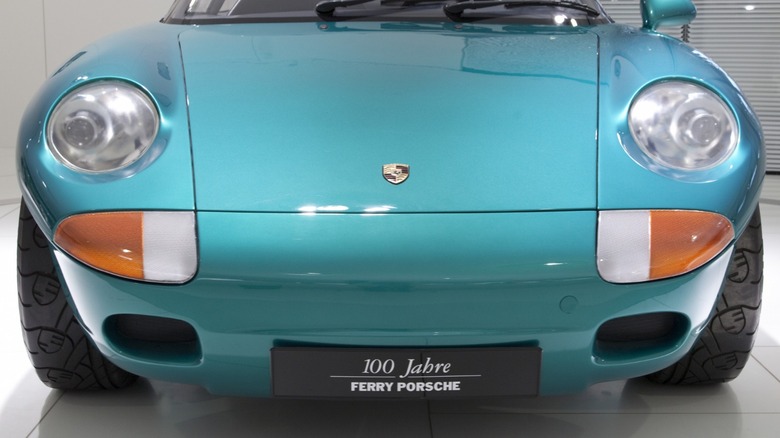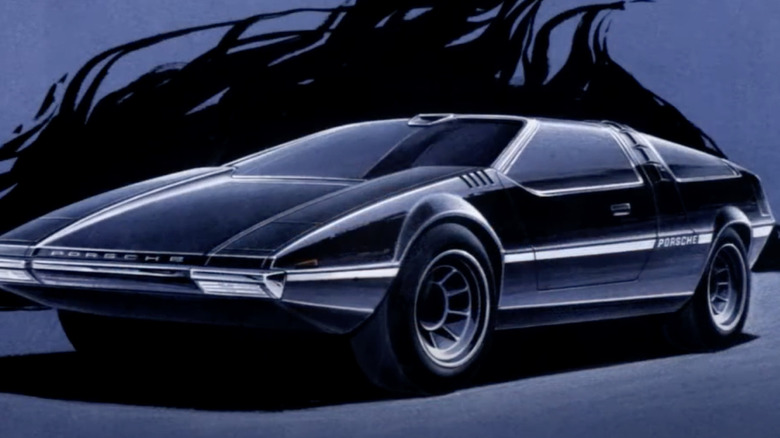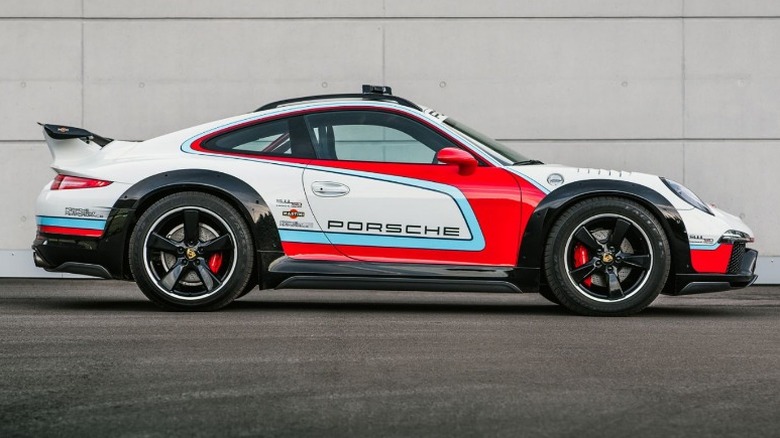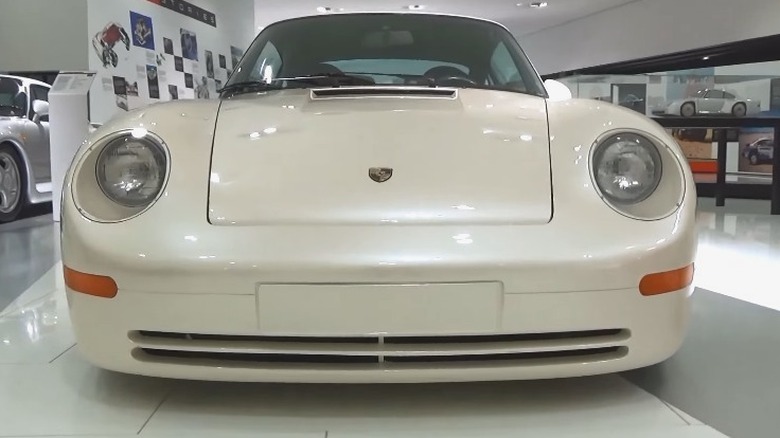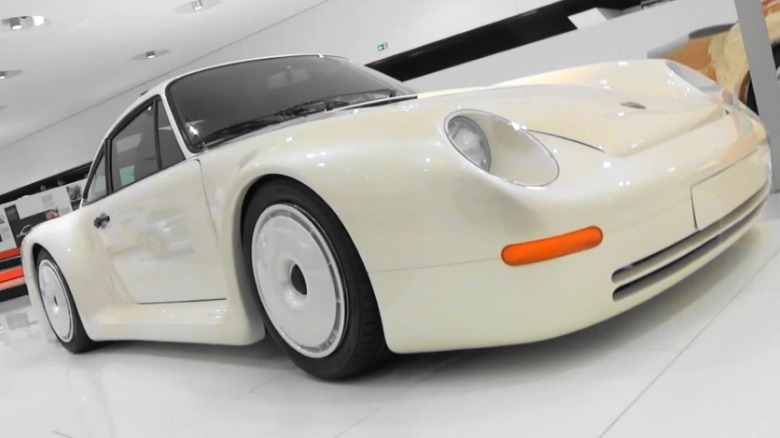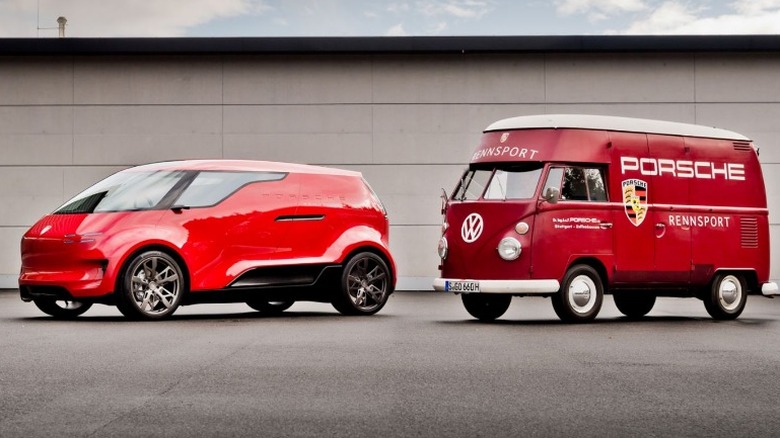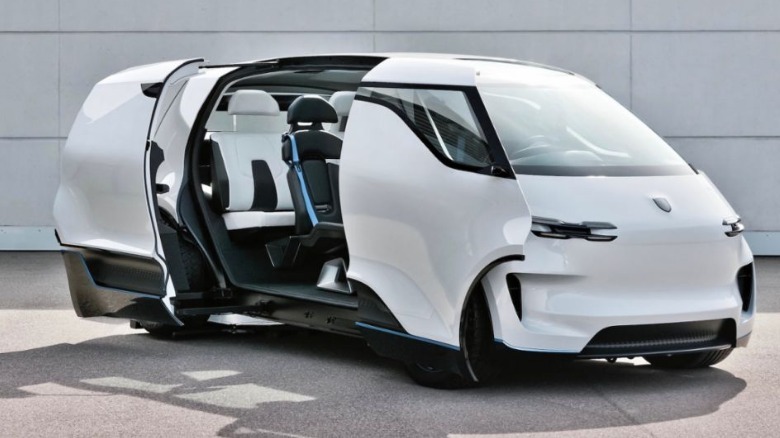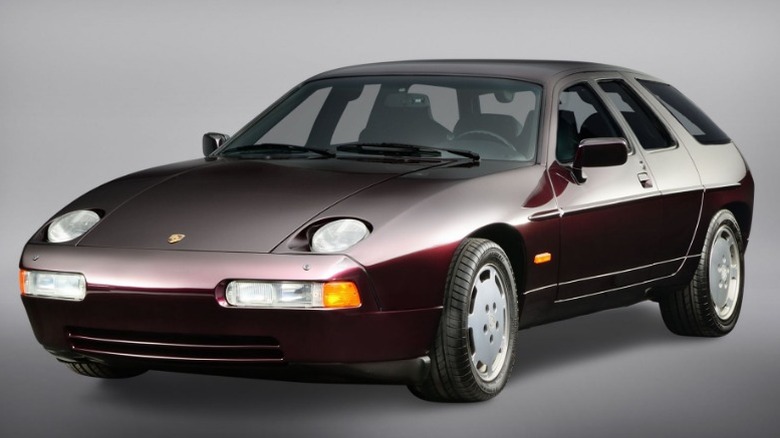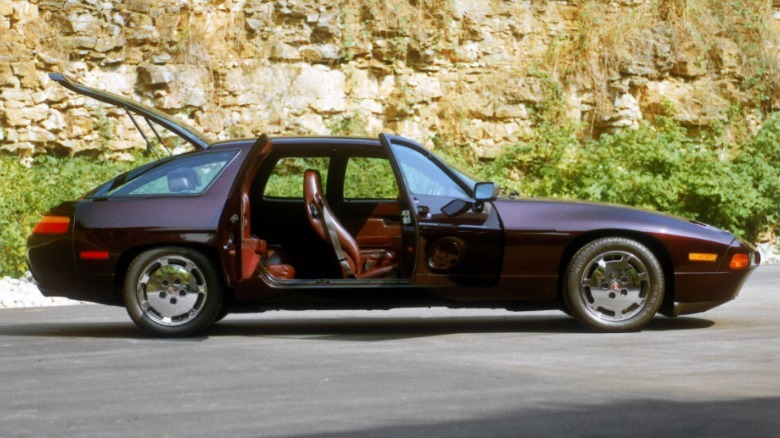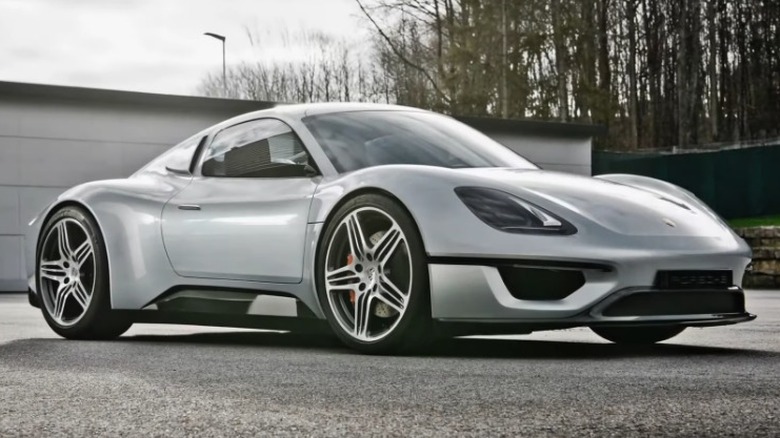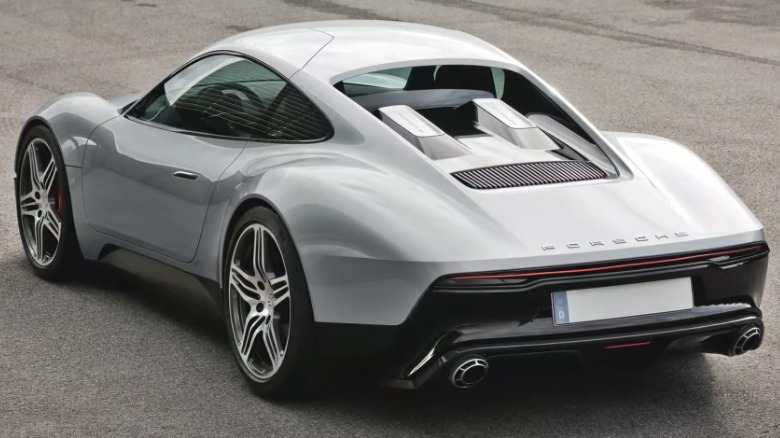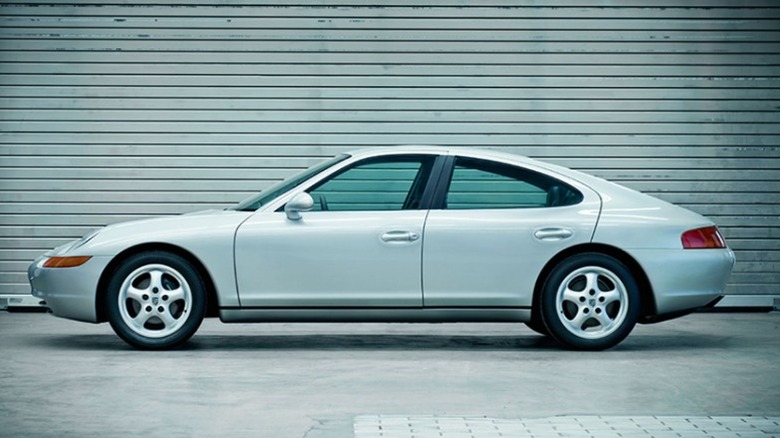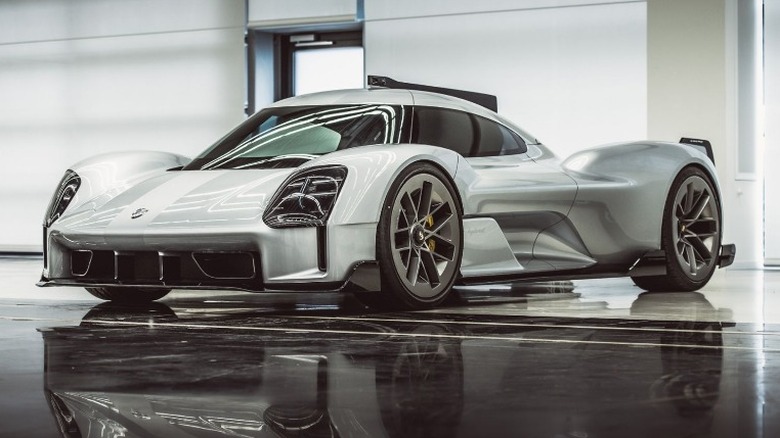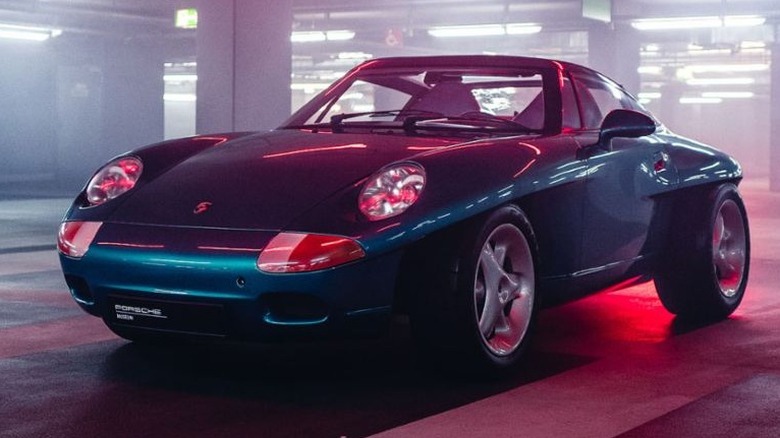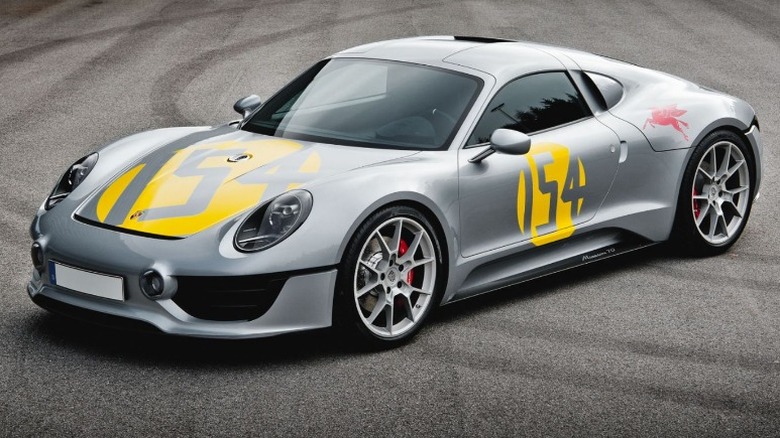10 Coolest Porsche Concept Cars Ever Made
As a leading maker of sports cars, Porsche has created, built, and distributed dozens of the most exciting cutting-edge cars capable of extreme speeds with precision handling. Among the many models produced are rare and special cars that have introduced new technology to the industry that has since filtered down into regular passenger cars. The Porsche 959 of the mid-'80s, for example, featured many firsts, such as an electronically controlled suspension, something now found on a common Kia or Buick. Others came with bespoke options not seen on anything else since, such as the V10 of the Carrera GT.
Not only has Porsche made special editions that have turned into highly valuable collector cars, but regular production models have also become sought-after automotive prizes. Yet, perhaps none of these models would have been possible without design development taking place first. From that process comes concept cars that show the future of design and engineering for the company as well as help to shape the look of what is to come. Porsche's history is filled with plenty of interesting concept cars, and these are the coolest.
1970 Porsche Tapiro Concept
The early 1970s was a heady time for auto development, particularly in concept car design. Scores of interesting concepts hail from this period displaying fabulous designs meant to push the boundaries of design and possibly even good taste. The predominant design element that seems to have proliferated in the design houses of Italy and elsewhere was the wedge. This would even lead to the production of the iconic Lamborghini Countach but also found itself in Stuttgart in the form of the Porsche Tapiro Concept.
Unsurprisingly, the design of this car was styled in Italy by Giugario's Italdesign. It features a pointed nose sloping straight back into a glass canopy that finishes in a Kammback-style rear end. Its gullwing doors are an atypical Porsche design element, but are undeniably cool, especially with the windows stretched into the roof. Most interestingly, the gullwing feature is copied for the coverings over the engine compartment which opens similarly and also with curved canopy glass.
The Tapiro was never meant to lead to any production car. Its design was too radical for public consumption and it was auctioned off after being featured at the Los Angeles Imported Automobile and Sports Car Show in 1971. Sadly, sometime after it fell into private hands, tragedy befell this solitary Porsche model when it burned to a crisp, although the cause of the fire remains undetermined. The car still exists in the Italdesign museum to this day but it has not been restored.
2012 Porsche 911 Vision Safari
Porsche has participated in Rally racing for many years, often with great success. Having the weight of the engine planted over the rear wheels offers excellent grip and superb traction on the dirt. That's why it is a shame that the 911 Vision Safari model in 2012 never made it to a full production model. The Vision Safari sits on the 991 platform and was built when it was a new model.
It sits high off the ground and is equipped with large and thick all-terrain tires. Further enhancements to the suspension prepare it for differing rally stages and a row of slim LED lights on top display its readiness for a nighttime racing rally stage. The interior is stripped of anything not deemed essential to winning, meaning it lacks the creature comforts Porsches are generally known for. But it doesn't matter as this one was built to win and features a roll cage so the driver can feel at ease to open it up and push the limits.
While it seems that Porsche offering an extreme all-terrain version of its 911 in the showroom would be an extremely cool offering, this 911 was never put into production. However, for those adrenaline junkies with an extra $222,000 burning a hole in their pocket, Porsche has since produced the 911 Dakar, which is on sale now and ready for the street, sand, or dirt.
1983 Porsche 959 Gruppe B Prototype
Porsche released one of the finest supercars ever made in 1986 with its 959 masterpiece. It has long been hailed as an example of incredible performance and technological advances for its day. Yet, to build that car and make it available for sale, Porsche had to begin with some kind of design study, and that was called Gruppe B Studie, which was the concept for the 959 built in 1983.
The Gruppe B was initially created In the '80s, the World Rally Championship created a new class called Group B that attracted extremely powerful cars, and manufacturers wanted to show off what they could do. Porsche initially set out to build a new prototype car that could be built to the WRC homologation requirements and enter it into Group B. This basically meant Porsche would pull all the stops and bring this remarkable machine to fruition. However, the 959 would never enter a race because fatal accidents prompted Group B to be canceled before Porsche got a chance.
The concept car received an air-cooled 3.0-liter flat-6 with water-cooled heads and two turbos. It was good for 450 horsepower and the twin-turbo setup produced minimal lag. Nearly everything about the car was different from the 911 on which it was based, and that is apparent from its exterior. The production car stayed very close to the concept, but the styling exhibits many differences. It is currently located at the Porsche Museum in Stuttgart.
2018 Porsche Vision Race Service
If there is a concept that fans of weird and cool vehicles might want to write to Porsche management and beg them to produce, it is the 2018 Porsche Vivions "Race Service" van. Yes, a Porsche van is what needs to come next out of Stuttgart. Porsche developed a series of concept vehicles in its Vision series and most of them are interesting ideas of cool and different sports cars. Yet the Race Service van is kind of from left field for Porsche, and it is amazingly cool.
Vans are not inherently cool, but sometimes a van or a style of van comes along to counter traditional notions. The edgy 1970s custom vans are an example of how vans became cool, but even they have nothing on Porsche. The manufacturer says it is a six-passenger van created as a tribute to the VW Renndienst van used in previous eras to carry crew and equipment for Porsche racing programs. Details are sparse, but Porsche said the driver sits up front in a centrally placed lounge chair as sort of a captain of a space shuttlecraft. It is electric and supposedly has an autonomous driving mode.
The concept is meant to be a study of what future developments in electric propulsion could bring. This certainly takes on a futuristic appearance and, hopefully, will be within Porsche's product planning within the next decade. However, you should not hold your breath.
1987 Porsche 928 H50
While the Panamera and Taycan are successful products for the company, many Porsche fans likely wish they had the chance to buy a used version of the 928 H50. They can't buy one as it is a concept that was never built, but it would be popular at Cars and Coffee today.
Based on the luxurious and powerful front-engine 5.0-liter V8 928, this concept shows what could have been if Porsche sought family buyers a little more than a decade earlier. Although it is considered a concept, this was a serious study for a model to be put into production. The chassis of the 928, a car originally meant to replace the 911 but did not, is lengthened to accommodate rear passengers and includes rear-hinged doors for access. Otherwise, the rest of the car is basically all 928. It looks odd to modern eyes, but if these had been on the road these past 30 years, we might see it as just another Porsche.
It is a car that could have been, but engineers found it to not be rigid enough with the extra length. Porsche not only shelved the project but also hid it away from the public until bringing it to Pebble Beach in 2012 for its first-ever public viewing.
2013 Porsche 904 V2 Living Legend Concept
Sometimes you see a concept as the "one that got away." But after digging deeper into its specifications you realize it's the one that couldn't be. Sadly, the 904 V2 concept was untenable from the start.
The 904 V2 appeared to be an incredible pod racer sports car. Its lines are nothing but curves from front to back and they give the perception that it is a smaller MR2-like cousin of the 718 Cayman. It's dashing and sits low with the engine in the middle, meaning it would hug the corners like a go-kart. But the engine that powers it raises more questions than answers.
The 904 V2 concept derives the latter part of its name from the Ducati-supplied V-twin engine sitting behind the seats. As members of the VW corporate family, the Ducati motorcycle company and Porsche are both under the same corporate umbrella, which facilitates technology sharing where applicable. Rarely would be in the engine department, yet, here we have a Porsche with a motorcycle engine. The Ducati mill is a 1.2-liter twin that redlines around 12,000 rpm and produces 200 horsepower. That is not the kind of big power rating you'd expect from a Porsche, but this car is also based on the ultra-high-efficiency VW XL1 concept, meaning it is extremely lightweight. Regardless of how fast it can make a lap around the Nürburgring, it is a beautiful design and that's all that matters.
1991 Porsche 989
Another contender as the proto-Panamera is the Porsche 989 sedan. Built-in 1991, the 989 looks very much like a Panamera if it had been built almost two decades earlier. Based on its styling and proportions, it is not simply a stretched 911 or a four-door 928 like the H50, but a clean sheet design meant to be a genuine production passenger car for the company. Its styling also appears to be more or less production-ready and not a futuristic concept car never to be built. It looks practical and somewhat reserved, but certainly something from the '90s.
Porsche was independent in the late '80s and cash-strapped. It needed something big to sell in volumes to help dig the company out of a hole, and a competitor to the BMW M5 was planned. The 989 was to be a high-volume car powered by an all-new V8 engine, and it was to offer excellent performance and comfortable luxury in a performance-oriented package. The styling of the car is all original and did not borrow from existing models, although it would go on to influence the 996-era 911 models.
In the end, costs spiraled out of control and the numbers showed that the retail price of the car would shoot north of $200,000 in inflation-adjusted dollars when equipped with common options. This would have made it a pricey and low-volume car, which was the opposite of what Porsche needed. Therefore, the project was scrapped and 1995.
2017 Porsche 919 Street
While Porsche has made several blindingly fast road cars suitable for track use, such as the 911 GT3 RS, the iconic 959, and the technologically advanced 918 Spyder, many would like to have seen a production version of the 919 Street, a LeMans-inspired racer for the road.
The 919 Street has a direct connection to racing as it is a version of the 919 Hybrid that won the 24 Hours of LeMans every year from 2015 through 2017. It is a 900-horsepower hybrid with a V10 engine coupled to the electric drivetrain. While it shares much with the race car, its outer shell is unique and is elegantly styled for something that is easily conceivable as an exclusive model for the showroom. It sits centimeters from the ground and features sculpted lines meant to keep downforce on the wheels to tame the enormous power spinning all four wheels.
Aft of the striking curves meant to slice through the air are enormous side scoops to feed the 10 cylinders resting behind the passengers followed by an enormous air diffuser directing the air out the back. Perhaps the most striking feature is the trio of fins adorning the roof and rear of the wheel arches. Sadly, the LMP1 engine of the race car required a team of technicians and 45 minutes to start, making it highly impractical for any street use. It is also a clay model showing us only what could have been more than what could ever be.
1989 Porsche Panamericana
While most Porsche concepts are conservative in design and utilize styling that could be folded into actual production vehicles, this 1989 concept did no such thing. Based on a 964 Cabriolet 911 chassis, the Panamericana showed off a wild side of possible Porsche styling. It features a familiar shape from the 911, but everything else about it was turned up to 11.
Built as a gift to Ferry Porsche, son of founder Ferdinand Porsche, the Panamericana is propelled by the same 3.6-liter flat-6 as the contemporary 964 Cabriolet, giving it the same 250-horsepower output as the production car. The chassis is standard Porsche and even the interior is largely unchanged, however, the teal leather covering the seats and dashboard is certainly unique to this car. The styling and name are linked as La Carrera Panamericana is the name of a race from 1950 to 1954 that initially ran the length of Mexico from Guatemala to the American border. The car sits up high and its wide and thick tires feature an aggressive tread pattern meant to handle difficult terrain — they also have the Porsche badge included in the pattern.
The looks of this car could be a bit divisive. It is edgy and even a bit gaudy, and teal is not a common Porsche color. But it is a daring styling concept that was built for one of the company's most important figures, so all of that makes it a special car that is also very cool.
2016 Porsche Le Mans Living Legend
The 2016 Porsche Le Mans LIving Legend concept looks as if it should have been made into a regular production model to sit between the Cayman and 911. It is sharp and stunning, using familiar Porsche styling with a bit of something else intangible that just makes it cool. It is based on the Boxster but diverges with a few notable differences.
Perhaps the most significant feature differing this car from regular production Porsche models is the inclusion of an 8-cylinder boxer engine tucked away in the middle of the chassis — Boxsters and Caymans are 6-cylinder cars. The engine is also covered by a large panel that lifts almost straight up on an elaborate hinge and the doors swing up and out in a wing-like fashion. The engine is then covered by a split rear window that also lends to its distinctive look. The car just has a je ne sais quoi about it that is hard to define. The hood and doors are obviously so complex that making them would be prohibitively expensive, but costs don't matter when you are dreaming.
